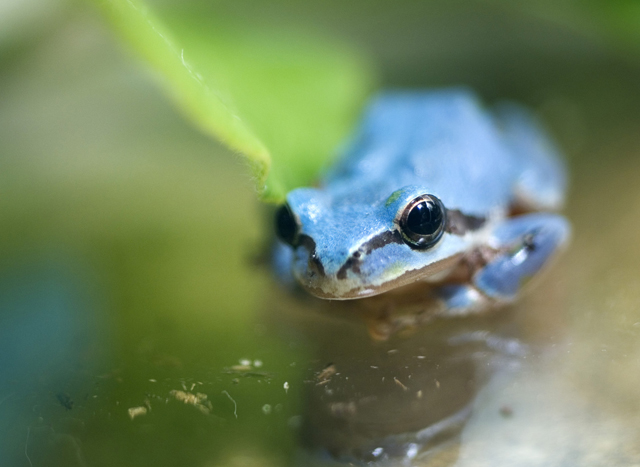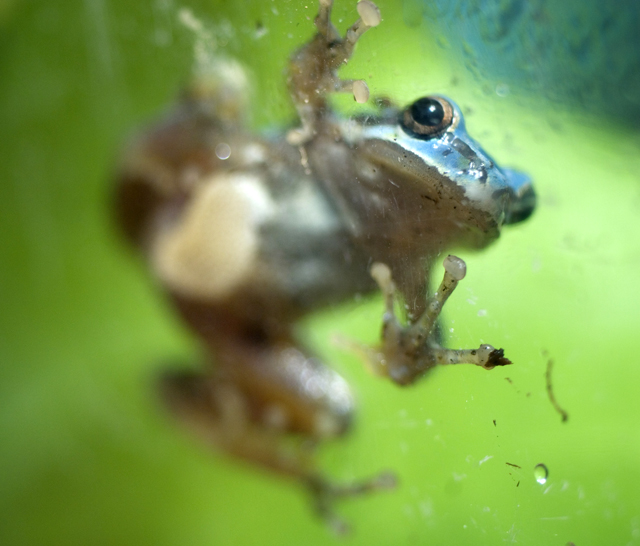
“There are a few species of frogs in which individuals normally are blue. The most well-known of these is probably the Blue Poison Frog (also called the Dyeing Poison Frog; Dendrobates tinctorius), a highly toxic species from Suriname, in which the blue color has been presumed to function as a warning to potential predators of the frog’s toxicity,” says Dr. Sharyn Marks, HSU biology professor and herpetologist.
But the frog that Eureka, Calif.-resident Linda Lange spotted in her garden isn’t of the poisonous, tropical variety. Instead, it’s a common Pacific Tree Frog (Hyla regilla; also known as Pacific Chorus Frogs, Pseudacrisregilla ). Only what’s not so common is how the frog’s blue appearance came to be.
According to researchers the green color typical of many frogs is created by yellow pigment layered over gray cells, which in turn makes the frog look green to human eyes.
In some cases, the yellow pigment is missing. And due to this genetic abnormality, the frog appears blue. When she first heard of the frog, director of the HSU Natural History Museum Melissa Zielinski’s first question was “how blue is it,” to which the Lange replied “really blue.”

After seeing the frog, Dr. Marks, said, “Wow that’s just a gorgeous animal. I think humans like blue and there aren’t a lot of blue animals in nature. We tend to react strongly to blue, so my eyes said ‘yum.’”
“Unlike green or brown frogs, which typically blend in pretty well with their surroundings, blue frogs stand out like a sore thumb. For the toxic Blue Poison Frogs, this isn’t a problem, but for your typical Pacific chorus frog, which isn’t toxic, blue coloration is a distinct disadvantage,” Dr. Marks adds.

Having the frog in the museum is something of a rarity in itself. “Normally we do not take in animals. Instead we refer people to the appropriate agencies or tell them to release the animal in the wild. Because we had done tree frog exhibits in the past, we were confident that we could display this frog properly,” said Zielinski.
June 6 marks the opening of the Natural History Museum’s latest exhibit, Animals of the North Coast. Many creatures, including the blue tree frog, will be on display during the museum’s regular hours, Tuesday – Saturday, 10 a.m. to 5 p.m. The museum is located at 1315 G Street in Arcata, CA and admission is $3 adults, $2 children.